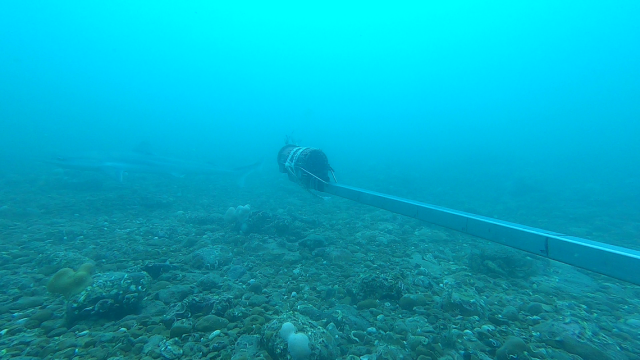Off the coast of the United Kingdom, scientists embarked on an intriguing expedition. They attached bait to an underwater camera device, lowered it into the depths from their research vessel, and waited with anticipation. What they captured on film was a remarkable discovery: a rare visitor with distinctive “blade-like teeth.”
Over a span of three years, researchers meticulously surveyed marine life at 28 sites along the Sussex region of the southwestern U.K. coast. Their primary aim was twofold: to catalogue the diverse array of animals inhabiting these waters and to determine the most effective methods for observation.
Their investigative arsenal included two distinct survey techniques: baited remote underwater video (BRUV) and environmental DNA (eDNA) analysis. BRUV involved deploying cameras equipped with bait to attract marine fauna, while eDNA entailed scrutinizing DNA samples collected from the water.
The exhaustive survey revealed a staggering 81 different species thriving off the Sussex coast, ranging from elusive eels to majestic sharks and an assortment of fish. Among the notable discoveries was the appearance of a tope shark, a species considered uncommon in the area, captured on camera as it cautiously approached the bait.
Tope sharks, identified scientifically as Galeorhinus galeus, boast distinctive features, including their blade-like teeth. Though they can grow up to 6 feet in length and weigh around 100 pounds, they pose no threat to humans and are often sought after as a culinary delicacy.
Additionally, researchers detected the presence of environmental DNA from the critically endangered European eel, Anguilla anguilla, despite not visually sighting the elusive creature on camera.
Reflecting on their findings, study co-author Alice Clark expressed surprise at the diverse marine ecosystem thriving in the Sussex Bay area. The researchers also underscored the complementary nature of BRUV and eDNA methods, noting that while BRUV surveys are more cost-effective, eDNA analysis detects a broader spectrum of species.
The survey serves as a foundational dataset for monitoring marine vertebrate diversity in Sussex Bay, providing valuable insights for future biodiversity conservation efforts. The research team’s collaborative endeavor promises to deepen our understanding of the intricate web of life beneath the waves.















































